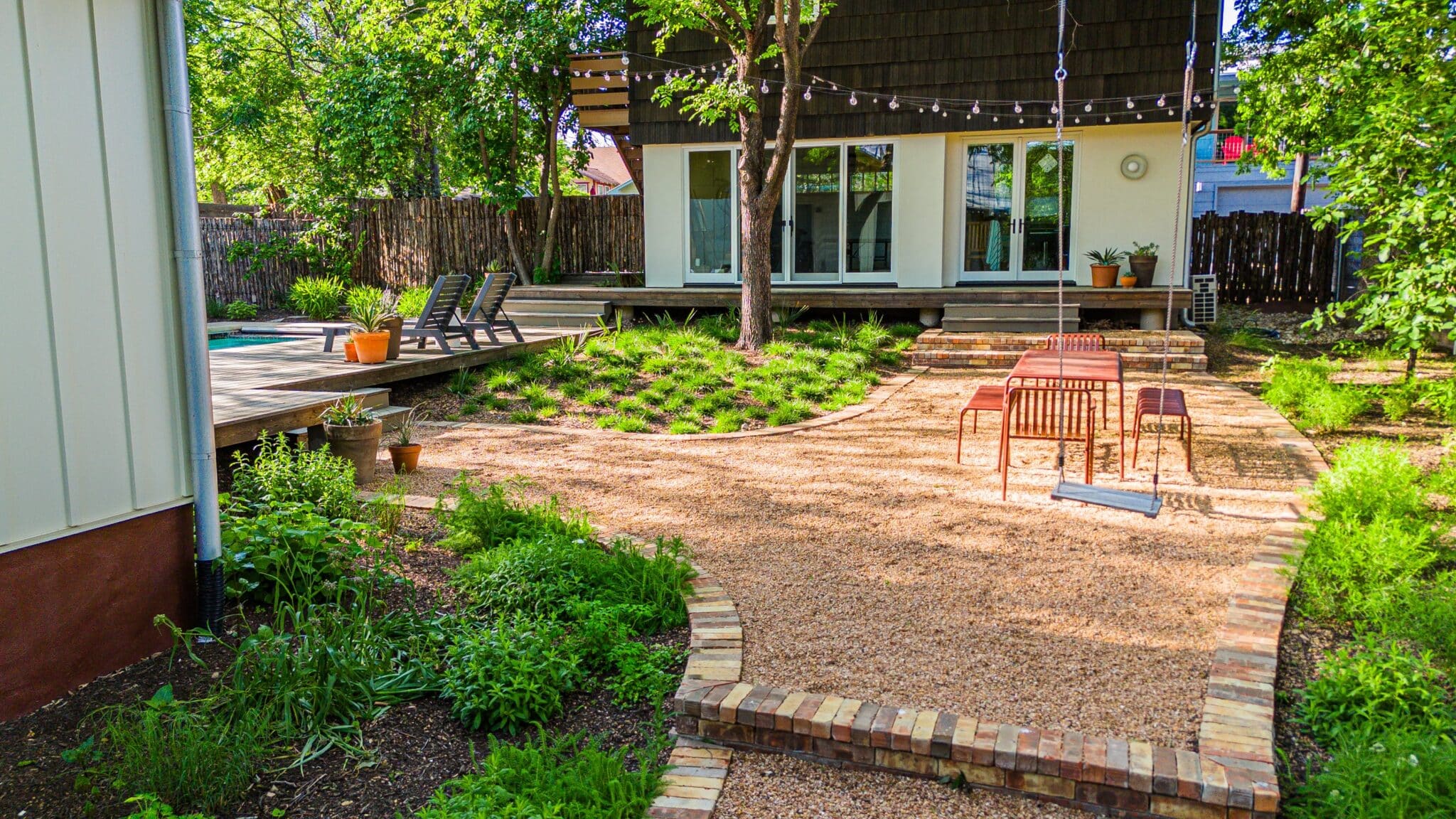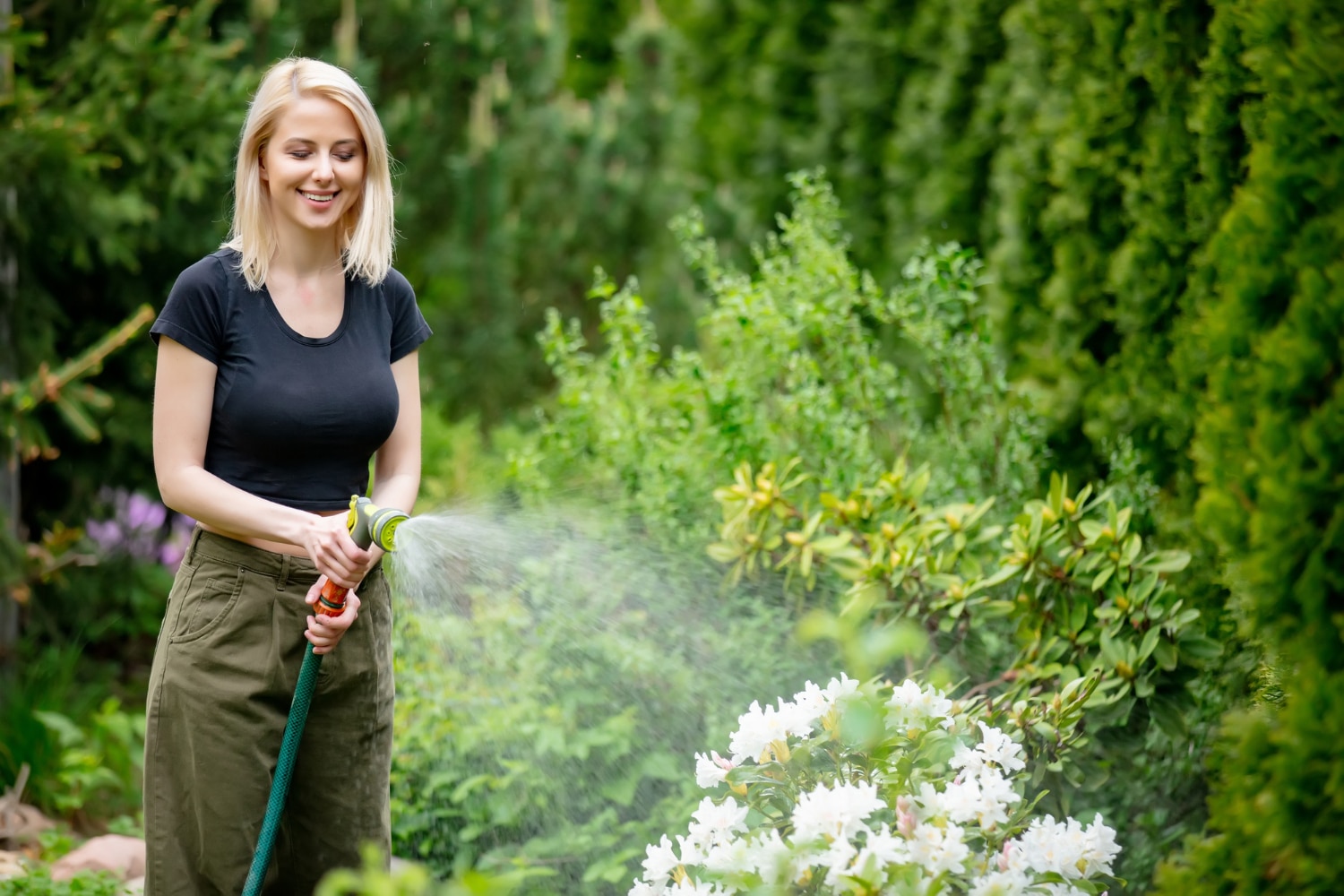Creating a beautiful Texas landscape takes skill and know-how. However, many homeowners make simple mistakes, leading to wasted time and money. Texas’s most common landscaping mistakes include improper plant selection, incorrect watering schedules, and neglecting proper drainage systems.
Bad plant choices mean high water bills and constant replanting, while poor drainage turns yards into swamps during rain storms. These problems can be fixed with the right knowledge. We’ll explain how to avoid these errors with simple changes to create an outdoor space that thrives in Texas’ unique climate.
Common Landscaping Mistakes to Avoid
Texas yards need special care due to the unique climate and soil conditions. Many homeowners make costly mistakes that harm their landscapes and waste money.
Ignoring the Texas Climate
Texas weather shifts from intense heat to occasional freezes, and many homeowners plant at the wrong times, losing their investment. We recommend planting in early spring or fall when temperatures are mild as this gives roots time to establish before extreme weather hits.
Hot summers require smart watering schedules, you should water deeply but less often to encourage deep root growth. Early morning watering reduces evaporation and helps prevent fungal diseases. Also, consider shade patterns throughout the day. Plants that need partial shade often burn in the afternoon sun, so place them on the east side of buildings or under deciduous trees.
Neglecting Soil Health and Proper Irrigation
Most Texas soils need regular amendments to support healthy plant growth. For example, clay soils benefit from organic matter to improve drainage. Get a soil test before planting as this tells you exactly what nutrients your yard needs. Most gardens will benefit from adding compost yearly to maintain soil health.
Installing irrigation without planning causes water waste and common irrigation mistakes include:
- Sprinklers spraying sidewalks or buildings
- Watering during peak heat
- Not adjusting schedules for seasons
- Missing rain sensors
To avoid waste, group plants with similar water needs together in zones.
Overlooking the Importance of Native Plants
Native plants evolved to thrive in this climate, needing less water and maintenance than non-native species.
Top Texas native plants:
- Texas Sage
- Black-Eyed Susan
- Turk’s Cap
- Gulf Muhly Grass
- Mexican Heather
These plants attract local wildlife and pollinators while resisting local pests and diseases better than exotic species. Mixing too many non-native plants creates maintenance headaches as they often need extra water, fertilizer, and pest control to survive.
Designing Your Texas Landscape
A well-designed Texas landscape creates a beautiful outdoor sanctuary while adding value to your home. The right planning and attention to visual elements will transform your yard into a functional space you’ll love.
Miscalculating the Visual Appeal
Proper color combinations make a huge impact on Texas landscapes, so choose 2-3 main colors that complement your home’s exterior. Mix plants with different blooming seasons to maintain year-round interest.
Height variation also adds depth and dimension. Plant taller shrubs and trees as backdrops, with medium-height plants in the middle and low-growing plants in front. Remember to consider sight lines from key viewing areas like windows and patios, mapping out plant placement before buying to ensure balanced proportions.
Failing to Plan for Outdoor Living Spaces
Divide your yard into distinct zones based on how you’ll use each area, creating separate spaces for dining, relaxing, and entertaining.
Consider these essential elements for functional outdoor rooms:
- Shade structures like pergolas or mature trees
- Comfortable seating arranged for conversation
- Proper lighting for evening enjoyment
- Easy access to utilities and storage
Leave enough open space between zones for smooth traffic flow, ensuring walkways are wide enough for comfortable movement between areas. Think about views from inside your home when positioning outdoor living spaces, and place seating areas where they won’t block important sight lines.
Proper Plant Selection and Placement
The success of your Texas landscape depends on choosing the right plants and putting them in spots where they can thrive. Smart placement prevents costly mistakes and keeps your yard looking great with less work.
Wrong Tree and Shrub Choices
Texas live oaks need at least 30 feet of space to grow properly and we recommend planting them away from buildings, power lines, and other structures. Many shrubs grow much larger than their initial size suggests, and a common error is placing them too close to windows or walkways. For example, Texas sage needs 6-8 feet of space to reach its full size.
Small ornamental trees like crepe myrtles work well near houses as they won’t damage foundations or block views when they mature.
Inadequate Attention to Flowers and Mulch
Focus on grouping flowers with similar water needs together. Drought-resistant zinnias shouldn’t share space with thirsty impatiens. This simple step saves water and prevents both over- and under-watering.
Native Texas flowers like Black-eyed Susans and Lantana need specific light conditions to bloom – plant sun-loving varieties in areas that get 6+ hours of direct sunlight daily. Proper mulching is also essential for healthy plants.
Mulching Tips:
- Apply 2-3 inches of mulch around plants
- Keep mulch 3 inches away from tree trunks
- Replace mulch yearly as it breaks down
Sustainable Practices and Maintenance
Smart landscaping choices protect your yard from damage while reducing ongoing work. Proper planning saves time, money, and natural resources in the long run.
Overlooking Erosion and Drainage Solutions
Water flow can destroy even the most beautiful landscape design, so install drainage swales along natural slopes to direct rainwater away from structures. Professional grading ensures water moves away from your foundation. A 2-3% slope directs runoff to storm drains or rain gardens.
A well-built retaining wall prevents soil loss in steep areas. Choose materials like native stone or treated timber that match your home’s style. Adding ground cover plants also helps hold soil in place, and native varieties like Asian jasmine or monkey grass work great in Texas climates.
Neglecting Regular Yard Maintenance
Create a monthly maintenance checklist for basic tasks, including:
- Remove dead plants and trim overgrown areas every 3-4 weeks during growing season. This keeps your yard looking neat while spotting potential issues early.
- Hire a landscaping service for complex jobs like tree pruning or irrigation repairs. DIY work can sometimes cause more harm than good.
- Add organic matter to garden beds twice yearly. This improves soil health and reduces watering needs.
- Check irrigation systems monthly for leaks or broken heads, fixing problems quickly to avoid wasting water and damaging plants.
Get in touch to arrange essential repairs and maintenance to keep your Texas landscape looking pristine.





